Our Process
-

Shearing + Skirting the Fleece
Everything starts with shearing — the annual harvest of wool from our sheep. Skilled shearers use electric clippers to carefully remove the fleece, taking care not to harm the sheep. Shearing isn’t just about collecting wool; it’s a key part of keeping the sheep healthy and comfortable throughout the year.
After shearing, we inspect each fleece on the skirting table. This step involves removing the rough, dirty, or heavily soiled sections — usually from around the belly and legs — so only the cleanest, highest-quality wool moves forward. It’s a hands-on, deliberate process that sets the tone for everything that follows.
-

Scouring the Fleece
Raw wool contains lanolin (natural grease), dirt, and debris, so it must be thoroughly cleaned through scouring. In micro mills, this process involves gently washing the wool in warm water and biodegradable detergents. Smaller mills are especially conscientious about water use and waste disposal, frequently using eco-friendly methods and recycling water when possible. Scouring leaves the wool clean and free of contaminants, preparing it for further processing.
-

Picking + Carding
Once scoured, the wool is "picked" to open and fluff up the fibers. This process also removes any remaining debris. Picking is essential in aligning the fibers, making the subsequent steps smoother and more efficient.
Carding is a crucial step in transforming washed wool into a uniform, spinnable material. During carding, the wool passes through a series of rotating drums covered in fine, wire teeth, which further detangle and align the fibers. This process creates a continuous web of wool, which is then divided into rovings or slivers, soft ropes of wool that are now ready for spinning. In micro mills, carding may be done on smaller, slower machines that focus on preserving the texture and integrity of the wool.
-

Spinning
The carded wool is then spun into yarn using small-scale spinning machines. Micro mills take great care in the spinning process to maintain the wool’s natural qualities, texture, and color. During spinning, the fibers are twisted together to create yarn, with the tightness of the twist determining the yarn’s final texture and strength. Our mill operators adjust the spinning to create the exact type of yarn, perfect for hand weaving.
-
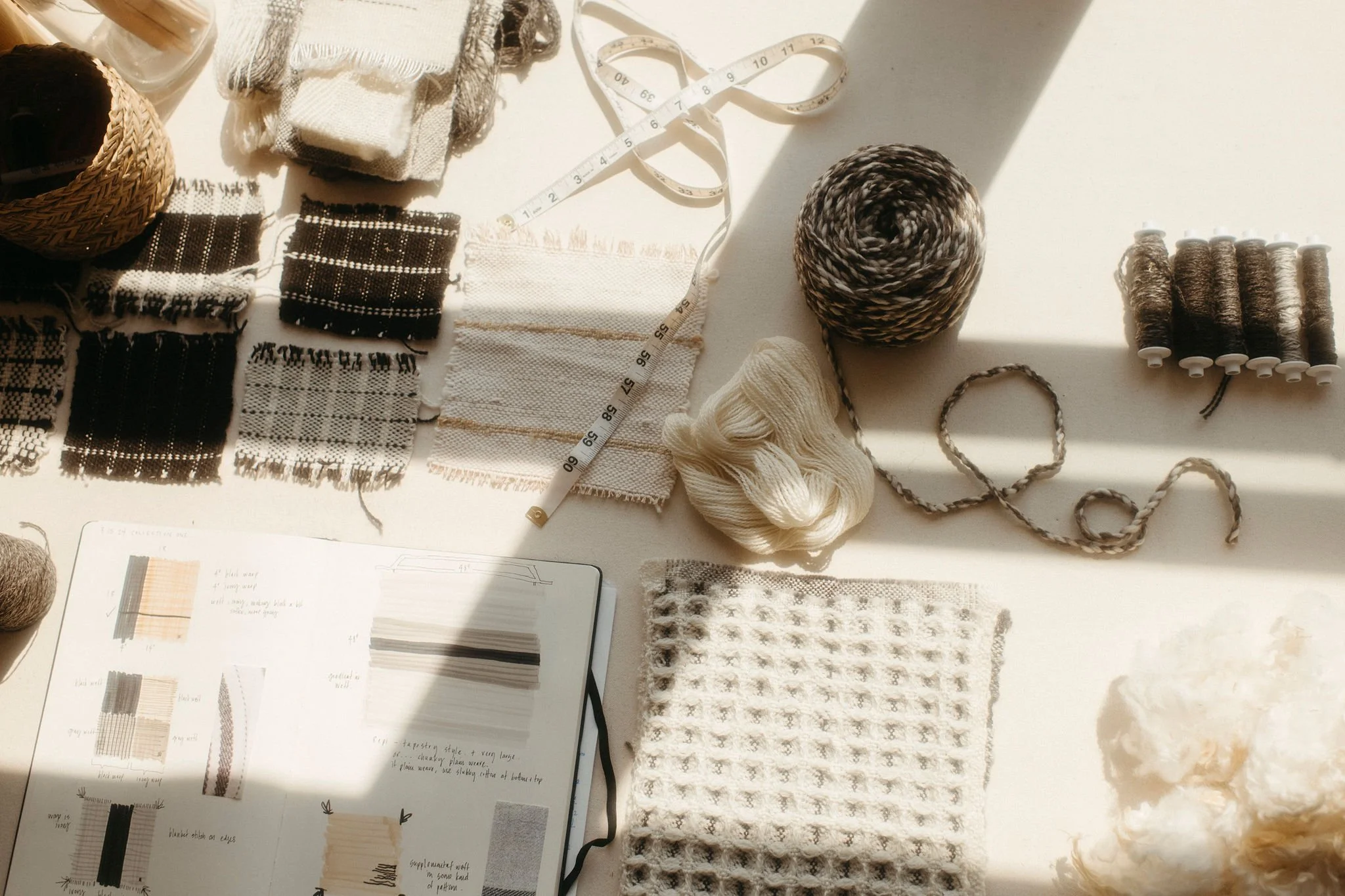
Design
When I enter the design phase, I let the raw materials and long established patterns lead the way. I’m drawn to the rhythm and focus of textile work — the winding and layering of fibers — and the soft, tactile quality it creates. I’m always looking for new ways to work with traditional techniques, letting texture and color from the world around me shape the look and feel of each piece. My process is intuitive and grounded in nature, with an eye for detail and a love of the handmade.
Once I’ve settled on an idea, I move to the loom to weave sample swatches. This part is all about exploration — testing out textures, patterns, and color combinations until the cloth feels just right. Over time, these swatches build a design library I return to and evolve from.
-
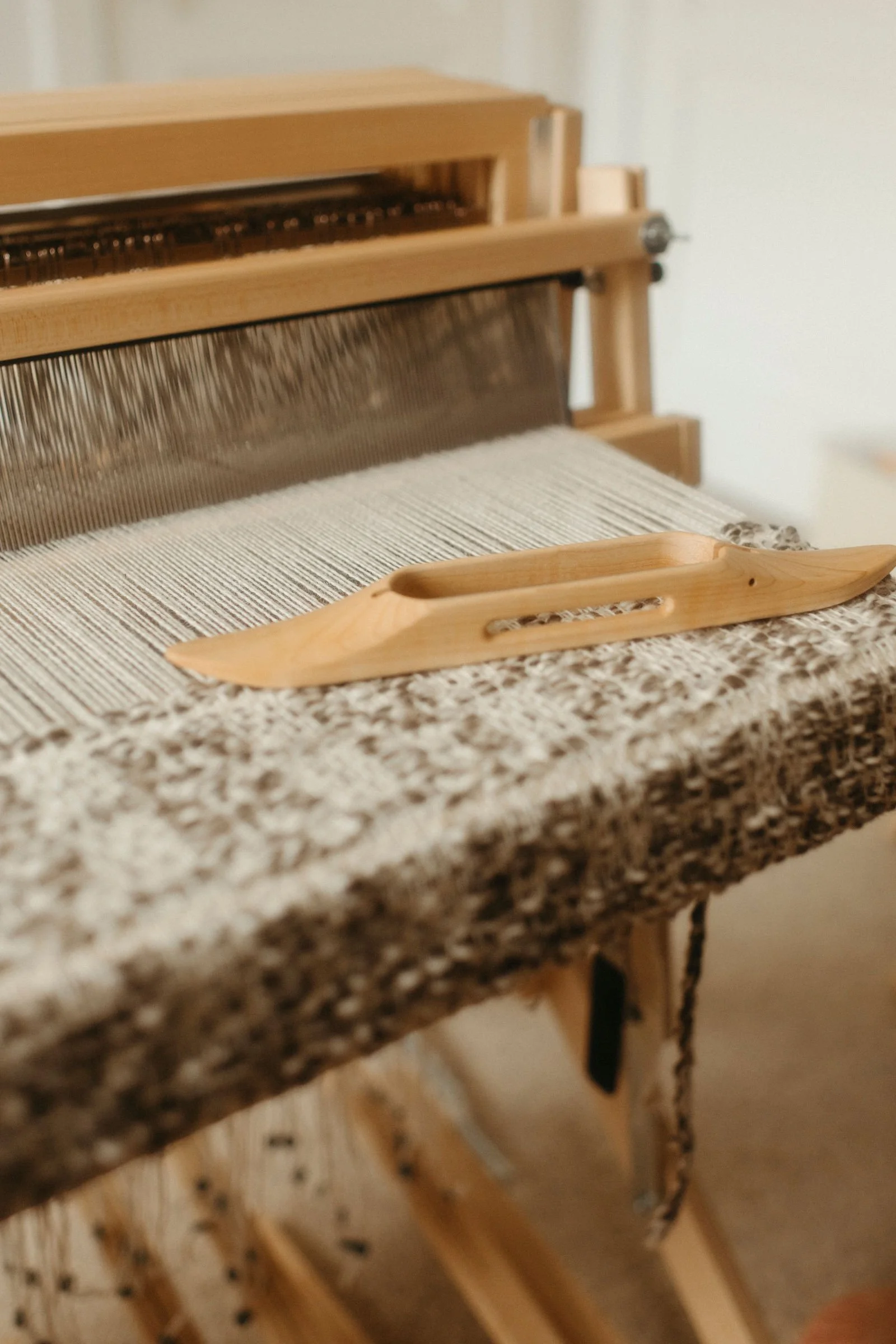
Weaving
Along with the handwoven samples I gather detailed design files that include notes on fiber content, sett, weave structure, dimensions, and finishing instructions. These materials are sent to our production weavers — highly skilled artisans who work on traditional floor looms or small-scale mechanized looms, depending on the scale and complexity of the design.
These weavers don’t just reproduce the pattern — they interpret it with precision and sensitivity, preserving the handwoven character and subtle irregularities that give each piece its depth and soul. It’s a collaborative process built on mutual respect, trust, and a shared commitment to craftsmanship, where every detail matters and every piece carries the mark of the hands that made it.
-
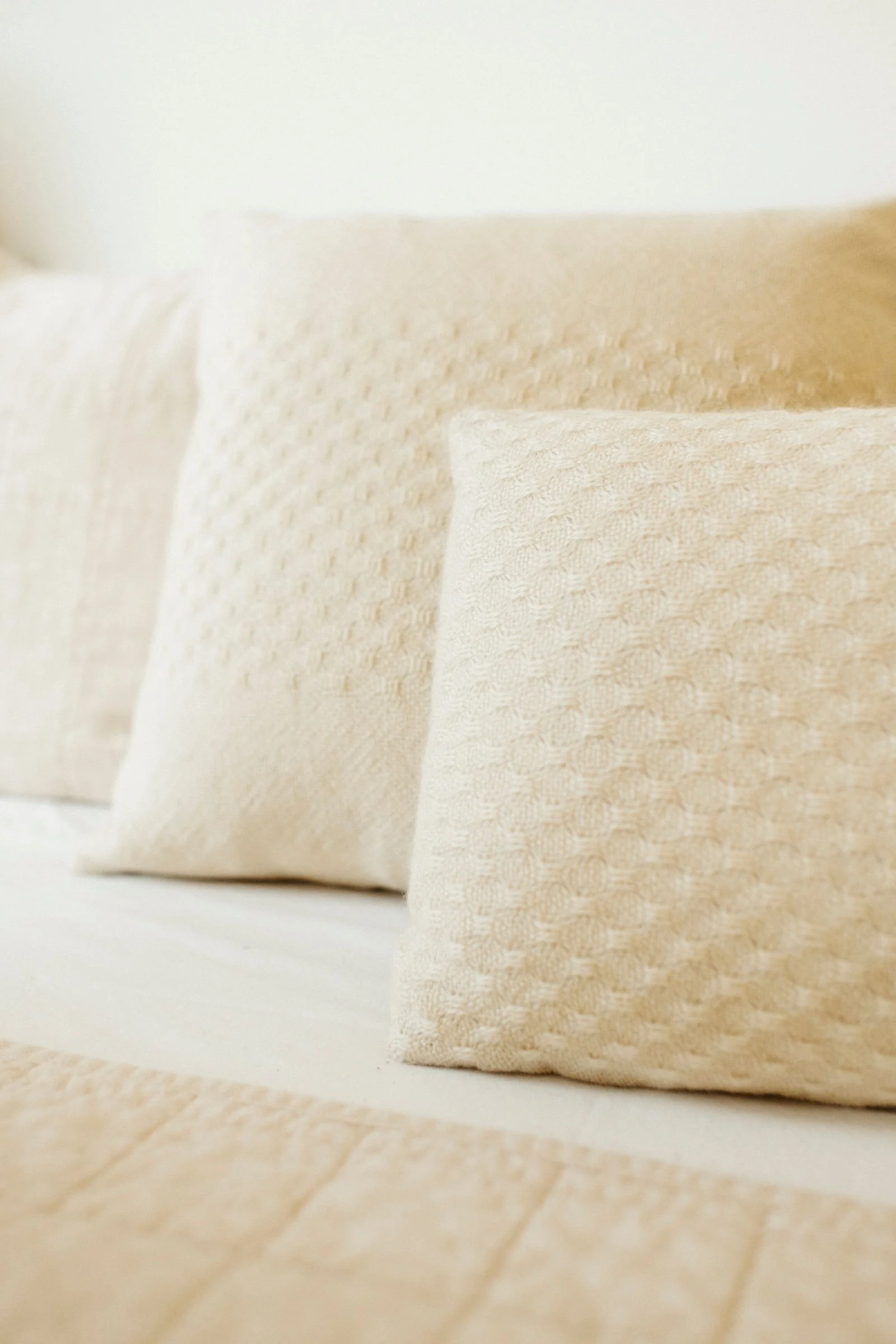
Cut, Sew + Finish
Once the fabric is woven, it returns to me for the final stage: cut and sew. Here, I work with a small local sewing studio that specializes in high-quality finishing. Each length of cloth is carefully measured, cut, and sewn into pillows, with attention to pattern placement and clean, durable construction. We add sturdy zippers, cotton tags, and natural fiber backings that complement the woven fronts — every detail is considered to honor the integrity of the fabric. Keeping this part of the process close to home allows for quality control, collaboration, and a true sense of place in each finished piece.
-

A Clean and Lasting Textile for Your Home
Pillows and blankets handwoven in a small batches.
100% Undyed Romney Cross Wool grown in Montana.
Handwoven in Greycliff Montana.
Shop Bellwether Collections
-

Fenceline Collection
-
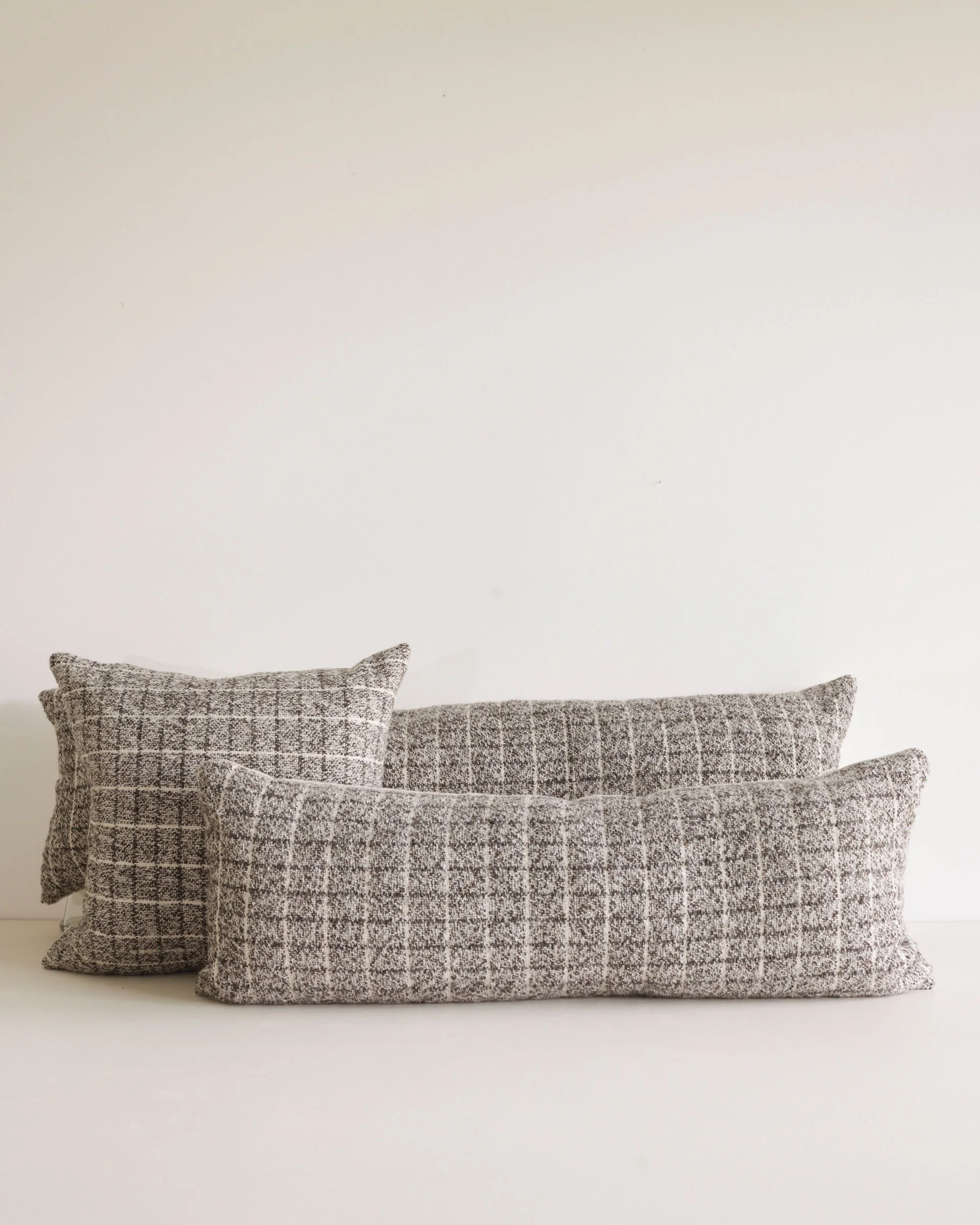
Foothills Collection
-

Highline Collection
-
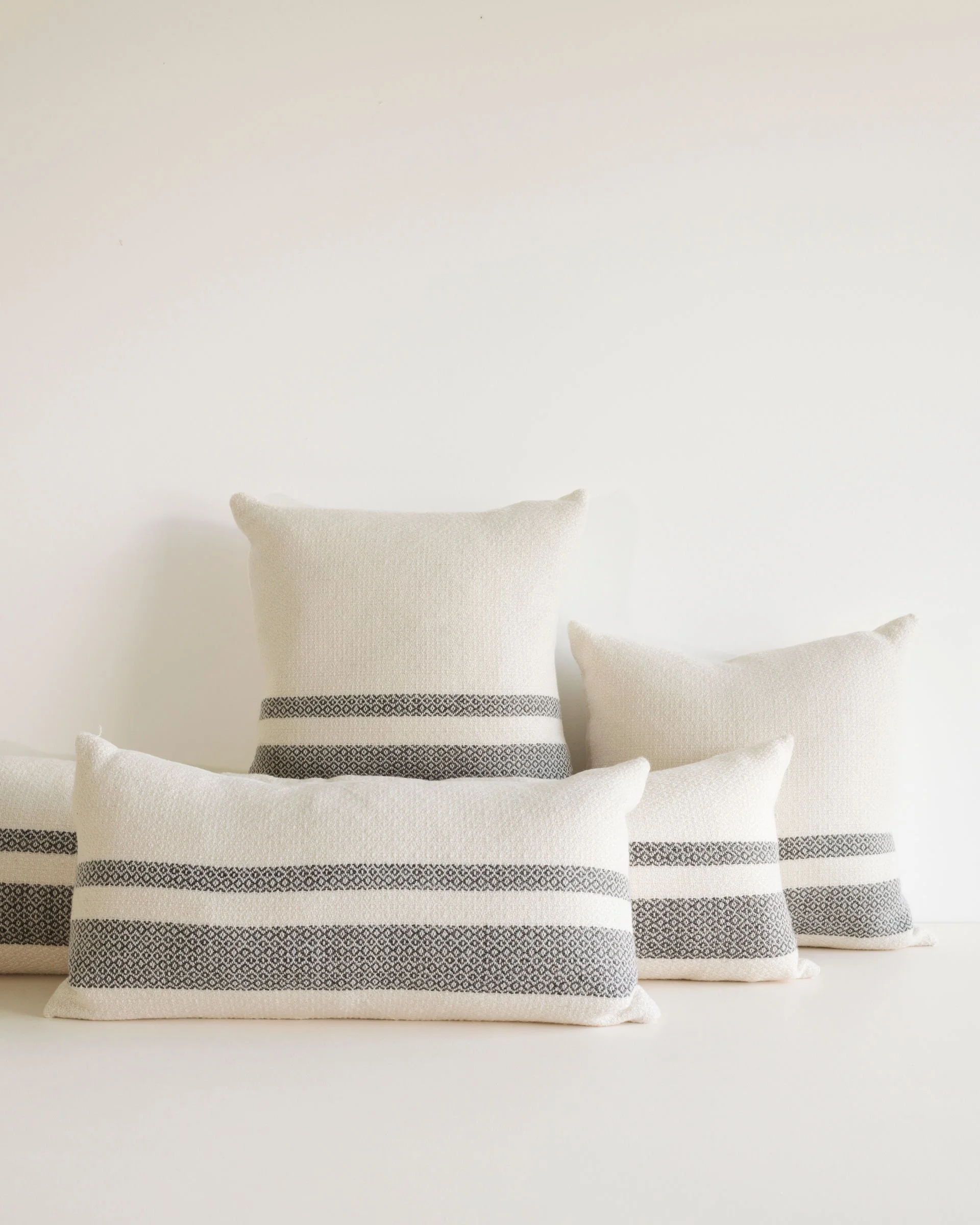
Prairie Collection
-

Ridgeline Collection

